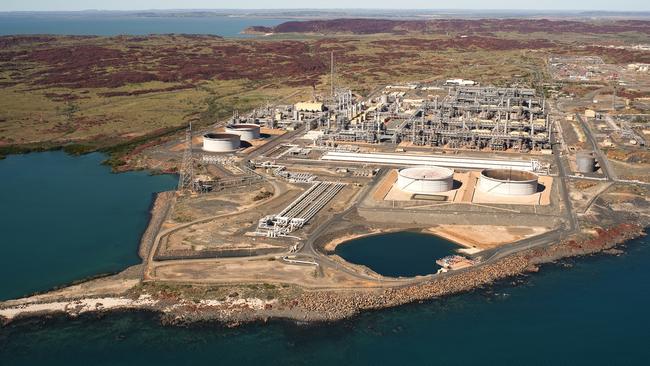Turmoil at Oil Search turns spotlight on oil and gas consolidation
Oil Search’s latest executive disaster puts the company in play at a critical juncture for Australian oil and gas.

Business
Don't miss out on the headlines from Business. Followed categories will be added to My News.
Oil Search’s latest executive disaster puts the company in play at a critical juncture for Australian oil and gas, leaving a second Australian independent player rudderless amid persistent chatter M&A could be about to reshape the market.
It is now more than seven months since Woodside announced the departure of Peter Coleman from its top job, and Australia’s biggest independent oil and gas player is still without a permanent replacement.
Like Woodside, Oil Search now has an interim chief executive as it considers major investment decisions. And, like Woodside, it has largely failed to benefit from a steadily rising oil price over the past few months.
Persistent rumours have circulated in Perth’s oil and gas community that BHP seriously considered a bid for Woodside earlier this year.
That chatter has been around for years. But Woodside’s bizarre April decision to allow Coleman to leave early, without announcing a permanent replacement, appears to have kicked the rumour back into circulation.
The fact that interim boss Meg O’Neill is looking to cut 30 per cent from its operating expenses, ahead of a final investment decision on its $16bn Scarborough project – which sources say could mean the loss of more than 500 jobs – also suggests something odd is afoot.
On the face of it, the idea seems bizarre.
BHP boss Mike Henry has been vocal in his defence of BHP retaining its petroleum division in the face of investor arguments the company should completely ditch its exposure to fossil fuels, and has even flagged potential acquisitions.
But Woodside is long on legacy assets – which BHP doesn’t want – and short on medium-term growth, which BHP does want.
Woodside’s growth projects are either on the never-never (Browse), or arguably marginal (Scarborough – which BHP already has a stake in, and doesn’t seem that excited about – and Sangomar).

Buying Woodside would offer BHP few new growth options, and a greater exposure to legacy assets such as the North West Shelf – which, like its Bass Strait interests, it has already considered offloading.
Some of the chatter suggests BHP’s interest in Woodside is focused on its early stage hydrogen and blue ammonia plans in Australia, an area in which BHP has an interest but no real presence. But a $30bn takeover would be a hefty price to pay for blue sky dreaming in commodities and technology not yet commercialised.
If Mr Henry hadn’t already effectively ruled out demerging BHP’s petroleum division it would make more sense for the transaction to run the other way around. Woodside would get growth options beyond Scarborough, more control of the North West Shelf joint venture, and the global presence it has always craved but been unable to deliver.
BHP’s willingness to sell, and a distinct lack of headroom on Woodside’s balance sheet would be key barriers to that option, however. A two-stage transaction could make more sense for BHP, though.
Putting together BHP’s portfolio with that of Woodside would deliver a big production platform with growth options to spare.
Spinning it out would, in one fell swoop, substantially decarbonise BHP’s global operations – keeping major ESG shareholders happy – and deliver a vehicle with a balance sheet that would be able to easily absorb the clean-up costs of the legacy assets. It would probably even be value accretive for BHP shareholders.
The troubles at Oil Search throw in an intriguing twist.
BHP is unlikely to be much interested in Oil Search. Papua New Guinea represents the kind of geopolitical risk the resources giant has been keen to avoid.
But Woodside has already had a tilt at Oil Search, in 2015. It went nowhere and left a bitter taste in the mouths of many, but may represent a viable option now – although the Woodside board’s seven-month paralysis in the face of having to pick a new chief executive argues against a swift move.
And others may also be interested. Fresh from all-but-demanding the resignation of the Oil Search board for incompetence on the company’s Monday investor call, MST Marquee analyst Mark Samter jumped back into his long-held view that Santos should make a play.
“If Santos isn’t at the table – in my view more fool them if they aren’t – then I think we do need to look at asset or whole-of-company sales processes. If Oil Search think they can sweep this all under the carpet, not selldown Alaska, force that FID upon an incoming CEO, and move on they are absolutely kidding themselves,” he said.
More Coverage
Originally published as Turmoil at Oil Search turns spotlight on oil and gas consolidation





